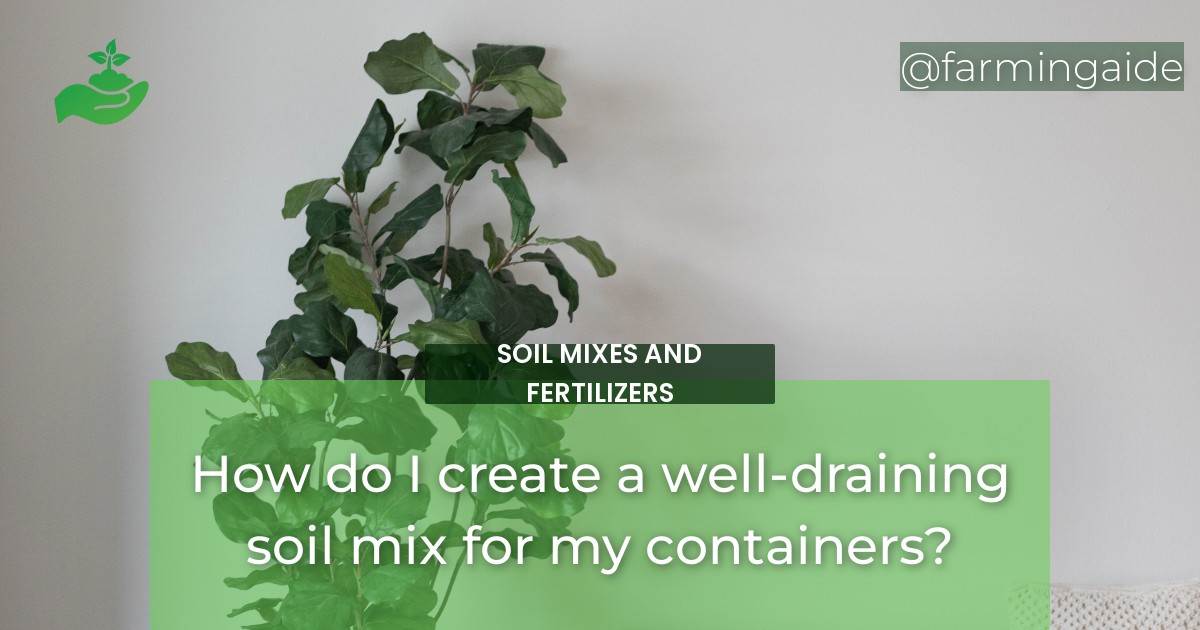Creating a well-draining soil mix for container gardening is crucial for the success of your plants. Poorly-draining soil can cause root rot, mold, and fungal diseases. A well-draining soil mix, on the other hand, allows water to flow through and prevents excess moisture from accumulating. In this article, we will provide you with tips and a step-by-step guide on how to create a well-draining soil mix for container gardening.
Understanding the Importance of Well-Draining Soil
A well-draining soil mix is essential for container gardening because it allows air to circulate around the roots, preventing them from becoming waterlogged. Here are some benefits of using a well-draining soil mix:
- Prevents root rot, mold, and fungal diseases
- Allows for better nutrient absorption
- Improves plant growth and overall health
On the other hand, poorly-draining soil can have negative effects on your plants:
- Causes root rot and other diseases
- Stunts plant growth
- Leads to nutrient deficiencies
Ingredients for a Well-Draining Soil Mix
Here are some ingredients that you can use to create a well-draining soil mix:
- Perlite: A lightweight volcanic rock that helps with aeration and drainage.
- Vermiculite: An expanded mineral that is high in water retention and aeration.
- Sand: Coarse sand can improve drainage, but it should be used in moderation.
- Coir: A byproduct of coconut processing that improves water retention and aeration.
- Peat moss: A natural product that improves water retention and aeration.
ALSO READ
Measuring and Mixing the Ingredients
The amount of each ingredient you use will depend on the size of your container. Here are some tips on how to measure and mix the ingredients:
Measuring the Ingredients for a Small Container
- 1 part perlite or vermiculite
- 1 part coir or peat moss
- 1 part sand (optional)
Measuring the Ingredients for a Large Container
- 2 parts perlite or vermiculite
- 2 parts coir or peat moss
- 1 part sand (optional)
Mixing the Ingredients Properly
- Add the dry ingredients to a large container and mix well with a garden fork or trowel.
- Add water slowly, mixing as you go, until the soil mix is moist but not soaking wet.
Adjusting pH Levels in the Soil Mix
The pH level of your soil mix is crucial for the health of your plants. Here are some tips on how to adjust pH levels in your soil mix:
Importance of pH Levels in Container Gardening
The pH level affects the availability of nutrients for your plants. If the pH level is too high or too low, your plants will not be able to absorb nutrients properly.
Ways to Adjust pH Levels in the Soil Mix
- Add lime to increase pH levels.
- Add sulfur to decrease pH levels.
- Use pH-adjusted water when watering your plants.
ALSO READ
Testing the Soil Mix for Drainage
It is important to test your soil mix for drainage to ensure that it is not retaining too much water. Here are some tips on how to test your soil mix:
Importance of Testing the Soil Mix for Drainage
Testing the soil mix can help you avoid overwatering your plants and prevent root rot.
How to Test the Soil Mix for Drainage
- Fill a container with the soil mix and water it thoroughly.
- Wait for the water to drain out completely.
- Stick your finger into the soil mix to a depth of 1-2 inches. If it feels moist but not soaking wet, the soil mix has good drainage.
Using the Well-Draining Soil Mix for Container Gardening
Here are some tips on how to use the well-draining soil mix in your containers:
Tips for Using the Soil Mix in Containers
- Fill the container with the soil mix, leaving some space at the top for watering.
- Choose the right container size for your plant.
- Water your plants regularly, but avoid overwatering.
- Use a balanced fertilizer to ensure that your plants are getting all the nutrients they need.
Choosing the Right Container Size for the Plant
The container size you choose will depend on the size of your plant. A good rule of thumb is to choose a container that is at least twice the size of the plant’s root ball.
Watering and Fertilizing the Plants in the Container
Water your plants regularly, but avoid overwatering. Fertilize your plants every 4-6 weeks with a balanced fertilizer.
Conclusion
Creating a well-draining soil mix for container gardening is essential for the health and growth of your plants. Follow these tips and steps to create a soil mix that will provide your plants with the nutrients they need while preventing root rot and other diseases.
Recap of Tips for Creating a Well-Draining Soil Mix for Container Gardening
- Use perlite, vermiculite, sand, coir, or peat moss to improve aeration and drainage.
- Measure and mix the ingredients properly.
- Adjust pH levels in the soil mix.
- Test the soil mix for drainage.
- Choose the right container size for your plant.
- Water and fertilize your plants regularly.
Benefits of Using a Well-Draining Soil Mix for Container Gardening
- Prevents root rot and other diseases
- Improves plant growth and overall health
- Allows for better nutrient absorption


